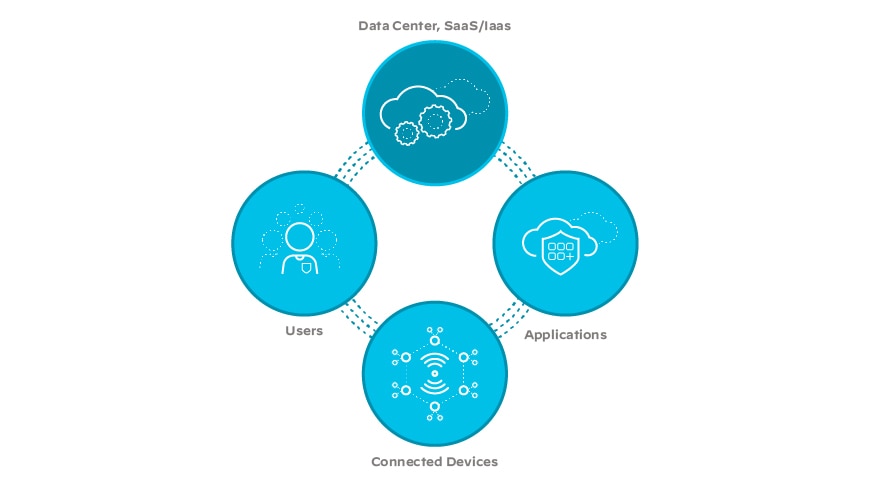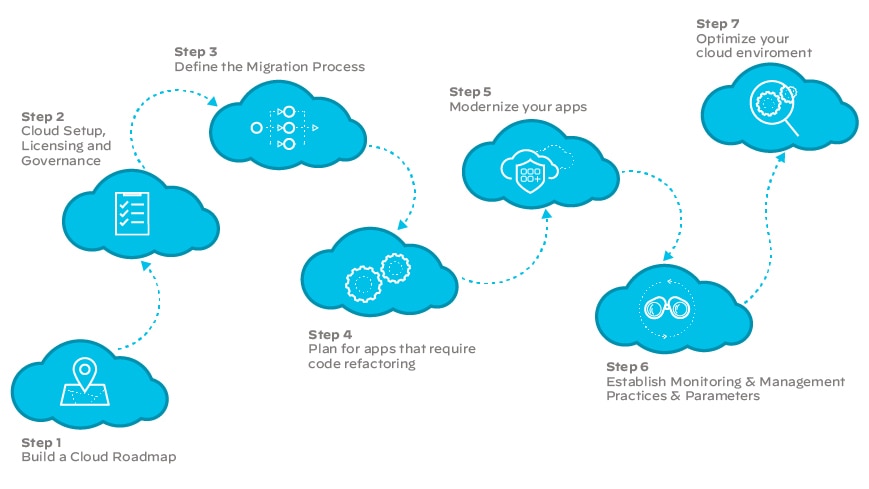What Is Next-Generation SD-WAN?
Next-generation SD-WAN is an advanced software-defined networking solution that incorporates modern technologies like artificial intelligence, machine learning and automation. Next-generation SD-WAN can offer several benefits to organizations, including improved network performance, increased security, reduced downtime and simplified network management.
What Is SD-WAN?
SD-WAN (software-defined wide area network) is a type of networking technology that uses software-defined networking (SDN) principles to manage and optimize the performance of wide area networks (WANs).

The Move from MPLS to SD-WAN
Since the 2000s, enterprises have deployed multiprotocol label switching (MPLS) networks to connect branch offices to centralized data centers. MPLS is still a common deployment of enterprise WANs, requiring hardware routers and manual configuration. It is usually outsourced and managed by service providers who guarantee network performance. However, it can be expensive, and it is not designed to handle the increasingly high volumes of WAN traffic that result from SaaS applications and cloud adoption.
The growing bandwidth requirements and restricted network budgets fueled by cloud adoption have rendered traditional WAN architectures obsolete. Since 2013, organizations have started migrating toward software-defined wide area networks (SD-WAN). Because it is typically a cheaper and more scalable solution, SD-WAN resolves the issues of MPLS without sacrificing the quality of service. However, as businesses leverage SD-WAN, they are discovering that their legacy solutions still can’t scale at the rate required.
Why We Need a Better SD-WAN
As enterprise environments continue to evolve, three fundamental shifts are driving the need for a new breed of SD-WAN:
- Cloud adoption
- Flexible connectivity
- Need for infrastructure automation
- Superior security outcomes
In 2020, Palo Alto Networks debuted a next-generation SD-WAN solution that delivers application-aware traffic intelligence, natively integrated cloud-delivered security and carrier-independent WAN connectivity. Through artificial intelligence (AI) and machine learning (ML), organizations can eliminate network trouble tickets and improve the end-user experience and secure all applications, users and devices better than legacy SD-WAN solutions.
Cloud Adoption

Cloud adoption is a crucial aspect of next-generation SD-WAN solutions for enterprises. SD-WAN solutions allow for efficient management and optimization of network traffic across distributed infrastructure, enabling enterprises to seamlessly integrate cloud services into their network infrastructure.
This integration allows for faster and secure access to cloud-based applications, reduced latency and improved overall network performance. With SD-WAN solutions, enterprises can effectively manage and secure their network infrastructure while taking full advantage of the benefits of cloud computing.
Cloud adoption is becoming an essential component of modern network infrastructure, and the next-generation SD-WAN solutions are at the forefront of this trend.
Cost-Effective and High-Performance Broadband
Cost-effective and high performance broadband is a key component of next-generation SD-WAN solutions for enterprise. SD-WAN solutions enable the use of broadband connections, such as cable or DSL, as primary connections for enterprise networks.
These broadband connections are often more affordable than traditional leased line connections, allowing enterprises to reduce their networking costs. Additionally, SD-WAN solutions use advanced bandwidth, ensuring high performance and reliable network connections. With next-generation SD-WAN solutions, enterprises can leverage cost-effective broadband connections while still achieving high levels of network performance and reliability.
Infrastructure Automation
Infrastructure automation is a critical aspect of next-generation SD-WAN solutions for enterprises. SD-WAN solutions allow for the automation of network infrastructure management tasks, such as device configuration, monitoring and troubleshooting. This automation simplifies network management and reduces the time and resources required to maintain enterprise networks.
SD-WAN solutions use advanced technologies like artificial intelligence (AI) and machine learning to optimize network traffic flows, ensuring applications receive the required bandwidth and operate smoothly. With infrastructure automation in next-generation SD-WAN solutions, enterprises can reduce their operating costs and improve the efficiency of their network operations.
Improved Security Outcomes
Next-generation SD-WAN technology can significantly improve security outcomes for organizations by providing advanced security features and capabilities. This technology allows for centralized management of network security policies, making it easier for IT teams to enforce consistent security measures across all locations and endpoints.
SD-WAN also enables traffic segmentation, which helps to isolate and contain security breaches, limiting their impact on the wider network. Additionally, many SD-WAN solutions include built-in encryption and advanced threat detection capabilities to further enhance security. By improving visibility, control and protection across the network, next generation SD-WAN can help organizations to better secure their data and reduce the risks of cyberattacks.
Requirements of Next-Generation SD-WAN
Legacy SD-WAN approaches aren’t keeping up with the cloud-ready digital enterprise. A next-generation solution should provide:
- Elastic networks that deliver a zero-routing network with a centralized controller-based architecture that seamlessly builds, manages and updates the network while flexibly supporting carrier-independent and higher bandwidth connections like direct internet, 5G and support for MPLS.
- Direct-to-app access that ensures an exceptional user experience for all applications like SaaS, cloud and business-critical/private applications while delivering application availability based on application performance SLAs.
- Zero Trust for apps, users and things with integrated and cloud-delivered security services (CDSS) to branch offices. The security needs to be granular (Layer 7) to enforce true least-privilege access and ensure only the right people get access to information and assets. Additionally, It should also provide visibility to all your assets, including the rapidly growing IoT devices, to ensure businesses can apply the right controls and policies to the entire network.
- AI-powered operations that provide the latest advancements in observability and AI/ML built natively to help customers automate complex IT and network operations center (NOC) functions with the power of AI/ML to increase productivity and reduce MTTR.
Palo Alto Networks Prisma SD-WAN simplifies network operations by applying ML to eliminate up to 99% of network trouble tickets, reduces security breaches by 45% with native integration with Prisma Access and improves the end-user experience by enabling a tenfold increase in WAN bandwidth for a lower cost than legacy solutions.
Benefits of Next-Generation SD-WAN
Next-generation SD-WAN offers three clear benefits:
- Exceptional User Experience
Ensure application availability based on real-time application performance SLAs and visibility to deliver 10x improvement in performance while eliminating the challenges with packet-based networks. - Simplified Operations
Palo Alto Networks Prisma SD-WAN reduces trouble tickets by up to 99% by simplifying tedious network functions while helping customers expedite SASE migrations. - Improved Security Outcomes
Palo Alto Networks Prisma SD-WAN natively applies best-in-class security to branches that reduces breaches by 45% with ZTNA 2.0.